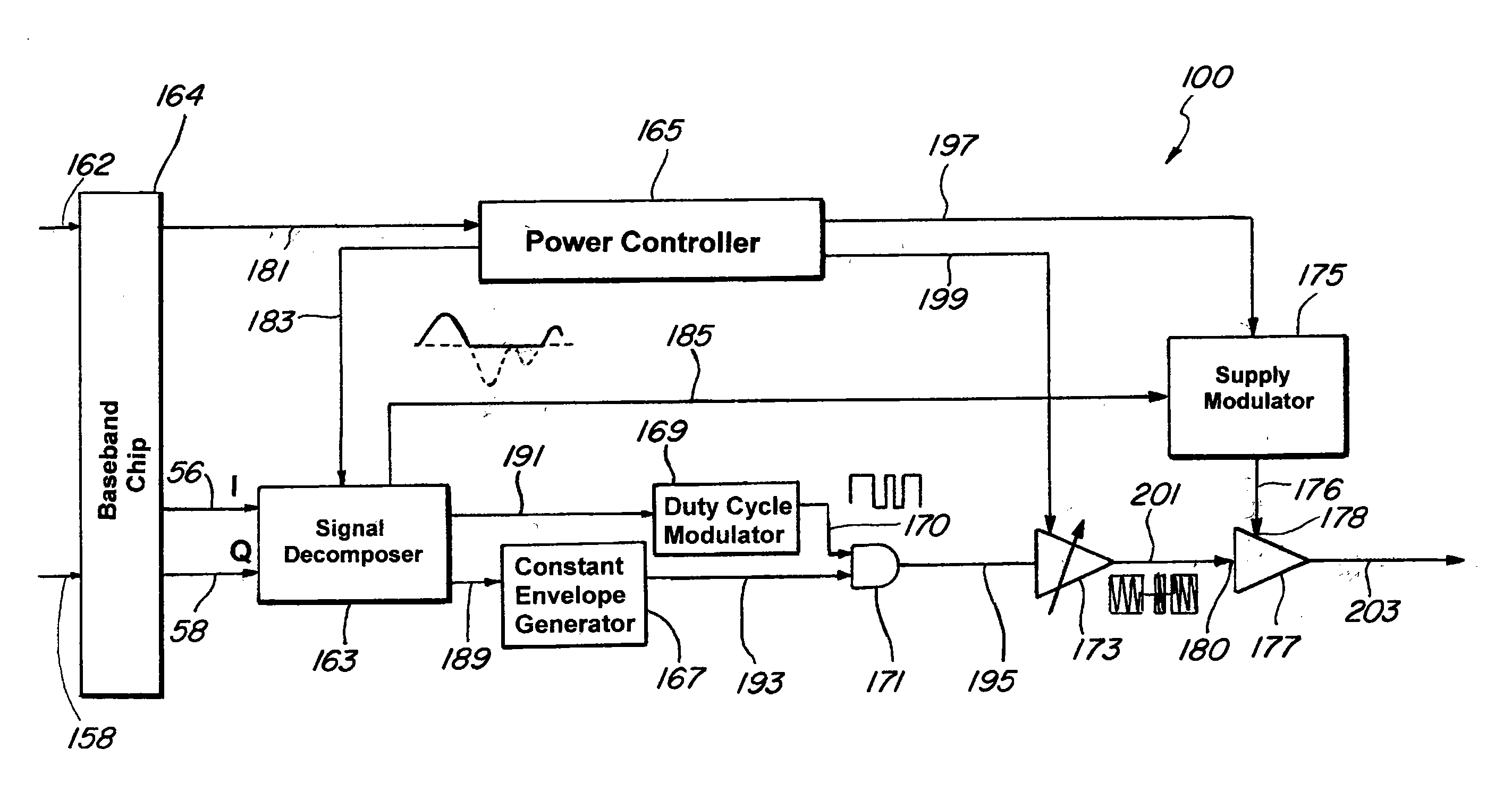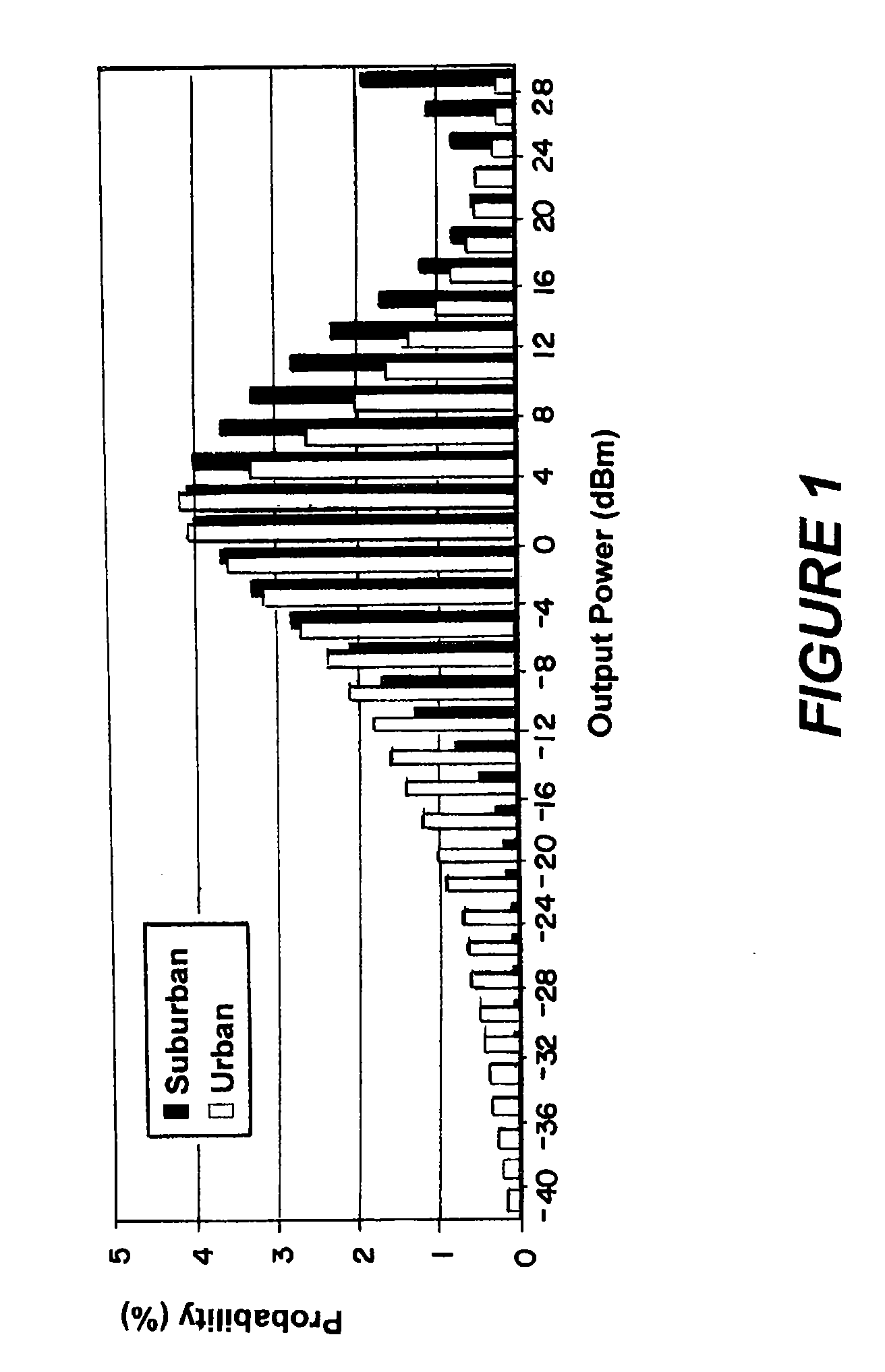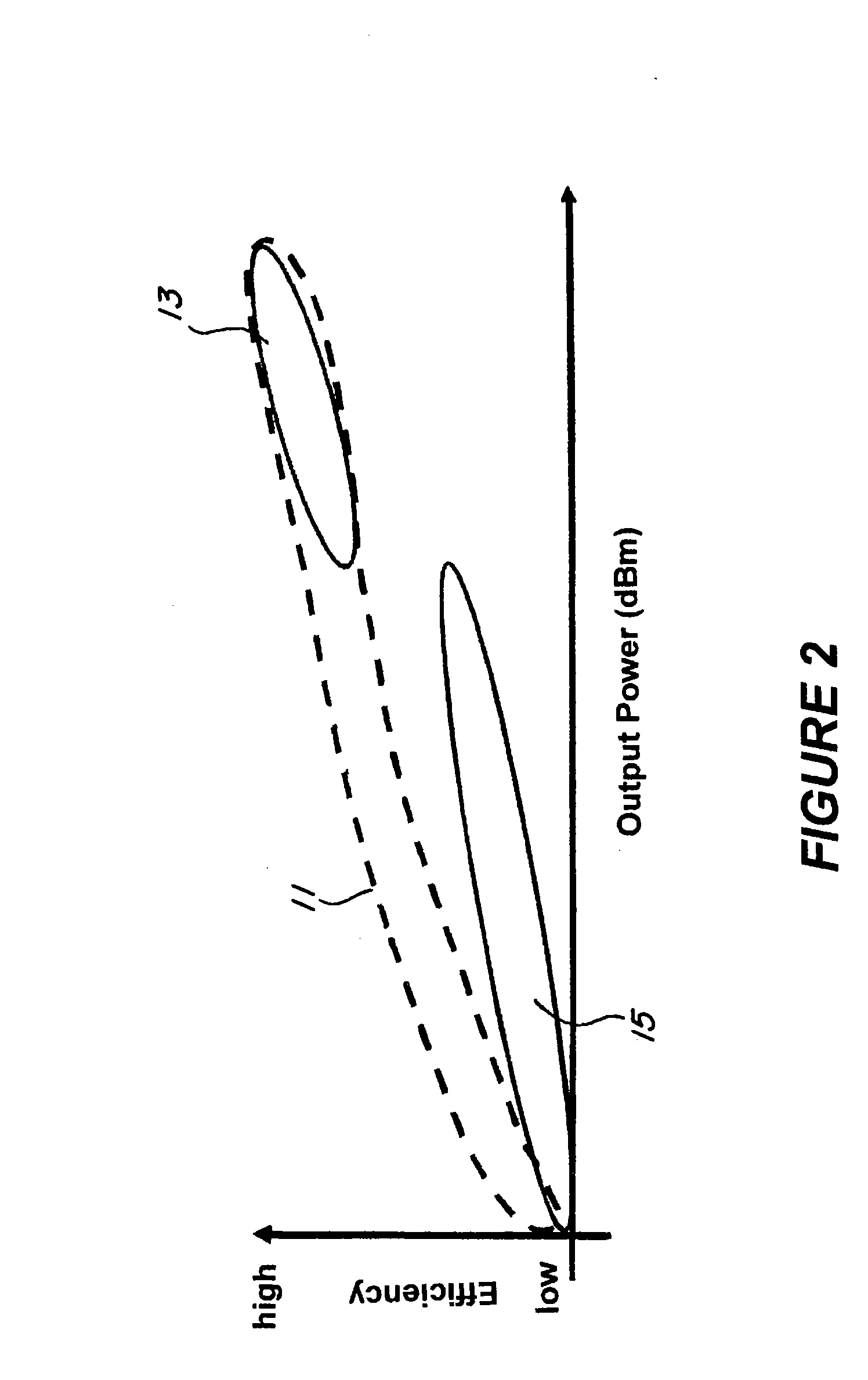Transmitter utilizing a duty cycle envelope reduction and restoration modulator
- Summary
- Abstract
- Description
- Claims
- Application Information
AI Technical Summary
Benefits of technology
Problems solved by technology
Method used
Image
Examples
Embodiment Construction
[0028]Referring to FIG. 2, a power amplifier operating in envelope elimination and restoration (“EER”) mode, also known as polar modulation, is efficient at high power ranges, depicted by region 13. However, EER modulation sacrifices efficiency at low and medium power ranges, depicted by region 15.
[0029]In contrast, a power amplifier according to the present invention, utilizes a combination of EER modulation and Duty Cycle Modulation Envelope Reduction and Restoration (“DCM ERR”) modulation, as depicted by region 11. The power amplifier operates at the high efficiency of the EER mode at high power ranges, and a much higher efficiency than the EER mode, at low and medium power ranges.
[0030]FIG. 3, a graph of input power at the RF input port versus output power of a conventional power amplifier, shows a normal power characteristic curve 21. The power amplifier can operate in quadrature mode in its linear region 24. However, at high power ranges at the RF input port, the conventional ...
PUM
 Login to View More
Login to View More Abstract
Description
Claims
Application Information
 Login to View More
Login to View More - R&D
- Intellectual Property
- Life Sciences
- Materials
- Tech Scout
- Unparalleled Data Quality
- Higher Quality Content
- 60% Fewer Hallucinations
Browse by: Latest US Patents, China's latest patents, Technical Efficacy Thesaurus, Application Domain, Technology Topic, Popular Technical Reports.
© 2025 PatSnap. All rights reserved.Legal|Privacy policy|Modern Slavery Act Transparency Statement|Sitemap|About US| Contact US: help@patsnap.com



